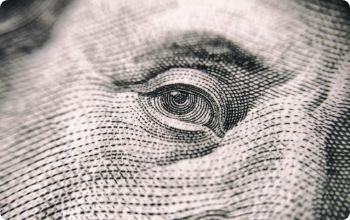In recent weeks, the Federal Reserve (the Fed) has been in a unique position with regards to considering whether or not to raise interest rates. On one hand, the economy is still recovering from the Great Recession and there are some signs of slow growth, while on the other there are indications that inflation may be creeping up. Thus, this presents an interesting conundrum for the Fed.
Some economists argue that raising rates even by a half percent could have negative impacts on both consumers and businesses as it would make borrowing more expensive, thus impacting their ability to make investments or take out loans. This could slow economic growth further, which is especially concerning given the lack of improvements in wage growth since the end of the recession.
On the other hand, holding off on raising rates could have its own risks as it could lead to a situation where inflation gets out of control. This could cause prices to rise faster than wages and thus erode real incomes. Further complicating matters is that inflation expectations tend to be very sticky—people expect prices to keep rising in the future if they see prices consistently increasing now. So if the Fed fails to act soon, it may find itself in a situation where inflation has already gotten too high and it will be difficult for them to bring it back down quickly without risking economic shocks.
The hard truth is that there is no one-size-fits-all solution here, as each nation’s economy is different and the Federal Reserve needs to take a holistic approach when considering rate hikes. It is important that they consider both economic growth and inflationary pressures, as well as how different policies could affect workers, households, businesses, and other stakeholders. With this in mind, it will be up to the Fed’s policymakers to decide when—and by how much—to raise interest rates in order to keep the economy on track without risking long-term damage.
Ultimately, the decision of whether or not to raise interest rates is one that requires careful consideration from the Federal Reserve and cannot be made lightly. There are risks associated with both raising and not raising rates, so it is vitally important that policymakers understand all of the implications before they make any decisions. By taking a careful and informed approach, the Federal Reserve can ensure that it is making the best choice for both the short-term and long-term health of the economy.
An important thing to remember when considering rate hikes is that monetary policy affects different parts of the population in different ways. Low interest rates tend to be beneficial for businesses as they allow them to take out loans more easily, while high interest rates benefit those who save money in banks as they can earn higher returns on their deposits. Likewise, wage earners are likely to benefit from low interest rates as money remains more readily available for consumption or investment, leading to increased economic activity which could mean better job prospects and higher wages over time.
Overall, the Federal Reserve must take into account a variety of factors in deciding whether or not to raise interest rates. It is important that they consider both short-term and long-term effects, as well as different how different policies could affect workers, households, businesses, and other stakeholders. With this in mind, it is up to the Fed’s policymakers to make sure their decisions are made with care and consideration—and ultimately for the benefit of all Americans.


